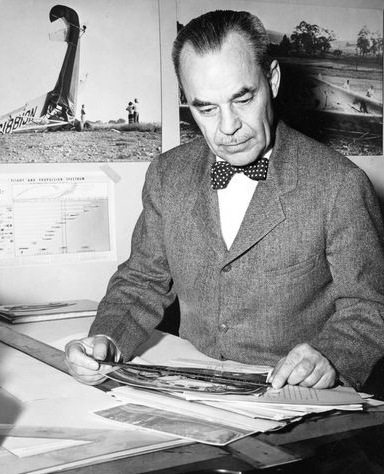Mechanical Analysis of Survival in Falls From Heights of Fifty to One Hundred and Fifty Feet
During the early part of the 20th century, falls from heights were a significant source of injury and death in workplaces. Little was known about what caused these accidents, but DeHaven emerged as an intrepid pioneer within occupational health and safety who understood that structural environments played a critical role. He devoted much effort to understanding all factors associated with such injuries, thus making him renowned for his work on this topic.
In 1942, renowned safety expert DeHaven published his groundbreaking work on falls from heights. His research suggested that these accidents were not due to individual behavior or characteristics but rather the broader structural and environmental elements of a particular space. He highlighted that the design and layout of buildings could act as catalysts for such unfortunate events; thus, it was necessary to identify those features to prevent them.
To prove his hypothesis, DeHaven performed countless experiments measuring falls from heights in various locations, including factories, mines, and construction sites. The results demonstrated that without proper lighting or guardrails, workers had a greater likelihood of losing their footing and falling due to the challenging conditions they encountered.
DeHaven developed a model to prevent falls from heights, emphasizing the importance of constructing and maintaining safe work environments. This model proposed strategies that counteracted environmental and structural factors contributing to such accidents instead of solely concentrating on individual behavior.
Dr. DeHaven revolutionized the field of occupational health and safety with his pioneering research on falls from heights, revealing how structural environments influence their likelihood and severity. His breakthrough findings opened the door to fresh strategies which now identify opportunities for prevention against these accidents. Without question, DeHaven’s discoveries have had a lasting impact on this space.
Excerpts from the study:
Introduction.
During the interval of velocity change in aircraft and automobile accidents many typical crash injuries are caused by structures and objects which can be altered in placement or design so as to modify the large number of severe and constantly recurring patterns of injury in these accidents. In order conscientiously to approach some of the engineering problems encountered in reduction of the potential injury hazards of windshield structures, seats, instrument panels, safety belts, etc, it was necessary to have some understanding of the limits of mechanical strength of the human body. The objective in studying the physiologic results of rapid deceleration in the following instances of extraordinary survival—after free fall and impact with relatively solid structures—was to establish a working knowledge of the force and tolerance limits of the body. On the basis of these data certain engineering improvements can be considered for aircraft and automotive design. Loss of pilots through injury due to the increased landing speeds of military planes has become more and more frequent; this loss and the ever present toll by accident in the automotive field are matters of grave national concern. Injuries in these fields are mechanical results stemming from localized pressures induced by force and applied to the body…
—
Conclusions
The human body can tolerate and expend a force of 200 times the force of gravity for brief intervals during which the force acts in transverse relation to the long axis of the body. It is reasonable to assume that structural provisions to reduce impact and distribute pressure can enhance survival and modify injury within wide limits in aircraft and automobile accidents.
Reference Link:
De Haven, H. (1942) Mechanical analysis of survival in falls from heights of fifty to one hundred and fifty feet. War Med 2: 586-596.
The full text of the document can be found at the following URL:
https://www.icorsi.org/_files/ugd/4ce8ed_964c3d1a426f4540b996c3698f301b90.pdf










